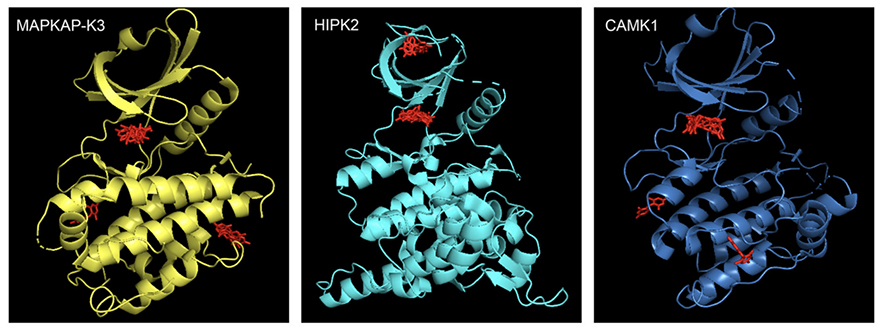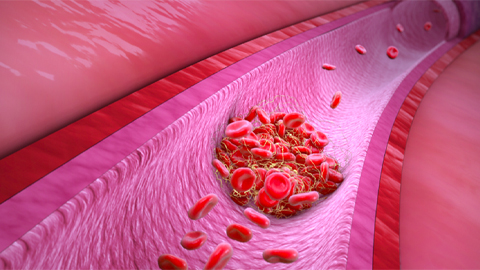How flame retardants could impair neurodevelopment
Evidence has been mounting for years that the flame retardants coating our furniture, electronics and construction materials are more harmful than helpful to human health. Members of one class of these retardants, polybrominated diphenyl ethers, or PBDEs, have come under increased scrutiny for their potential role in disrupting neurodevelopment, especially in children. Researchers have found that the 209 PBDE congeners can bioaccumulate in lipid-rich tissues, including in the brain, but the precise mechanism by which these compounds cause harm remains unknown.
Ramendra Saha, who effective Jan. 1 will be an associate professor of cellular and molecular biology at the University of California, Merced, first heard about PBDEs at the National Institute of Environmental Sciences, where he was a postdoctoral fellow. He listened to speaker after speaker describe the potential toxicity of these compounds that seemed to litter every home. As a new father at the time, he wondered how he could keep his son safe.
Armed with a background in neuroplasticity and transcription, Saha delved into the epigenetic effects of PBDEs in neuronal development and function.
Saha's lab found that certain PBDEs can act as promiscuous kinase inhibitors and disrupt a signaling pathway involved in cell growth, division and differentiation known as the mitogen-activated protein kinase extracellular signal-regulated kinase, or MEK–ERK, pathway.
"We were looking at environmental toxins that have been shown to have some correlation with intellectual disability and that act as an inhibitor to signaling cascades that are known to be important to normal neurodevelopment," Saha explained.
A paper in the Journal of Biological Chemistry describes the study in which Saha's team proposed a new mechanism by which one particularly toxic PBDE, 6-OH-BDE-47, known as 6-OH, could impair the MEK–ERK signaling pathway. Robert Poston, a Ph.D. student in Saha's lab at the time, noticed that MEK inhibitor PD0325901, or PD, had key chemical structures similar to 6-OH. Using 3D modeling software, the researchers simulated the binding interactions of both 6-OH and PD with MEK1.
The results were encouraging: 6-OH and PD both were calculated to bind in the same allosteric binding site for MEK1. When they tried to demonstrate this binding directly in the lab, however, they were stumped: Increasing amounts of 6-OH added to MEK1 did not lower MEK1 activity.
Teaming up with researchers at the University of Dundee in Scotland, they screened 6-OH with 140 kinases that represent most of the human kinome. Simulations of their top hits showed that 6-OH binding was most likely in the well-known ATP-binding pockets of the screened kinases, suggesting this PBDE could be a promiscuous ATP-competitive kinase inhibitor and could explain the complex and diverse effects of PBDE exposure.
Saha's group continues to study how 6-OH exposure can affect mitochondrial function, calcium homeostasis, regulation of synaptic function and other links to the impairment of MEK–ERK signaling.
Has Saha's work in the toxicology field changed his family's behavior? "Absolutely," he said. "We do not buy anything that is labeled 'fire resistant.'"
Though we might not be able to avoid PBDEs completely in items such as laptop computers, Saha suggests replacing old furniture and paying attention to consumer item labels to minimize exposure.

Enjoy reading ASBMB Today?
Become a member to receive the print edition monthly and the digital edition weekly.
Learn moreGet the latest from ASBMB Today
Enter your email address, and we’ll send you a weekly email with recent articles, interviews and more.
Latest in Science
Science highlights or most popular articles
Universal tool for tracking cell-to-cell interactions
A team of researchers has developed LIPSTIC, which can lay the groundwork for a dynamic map tracking physical interactions between different cells — the elusive cellular interactome.

Weedy rice gets competitive boost from its wild neighbors
Rice feeds the world. But researchers have found that a look-alike weed has many ways of getting ahead.

From the journals: JLR
A “T” makes a difference in blood clotting. High cholesterol: two screens are better than one. Biomarkers for cardiovascular risk. Statin-induced changes to the HDL lipidome. Read about recent papers on these topics.

Decoding microglial language
Emory University scientists characterize extracellular vesicles that facilitate intercellular communication.

What is metabolism?
A biochemist explains how different people convert energy differently – and why that matters for your health.

What’s next in the Ozempic era?
Diabetes, weight loss and now heart health: A new family of drugs is changing the way scientists are thinking about obesity — and more uses are on the horizon.

